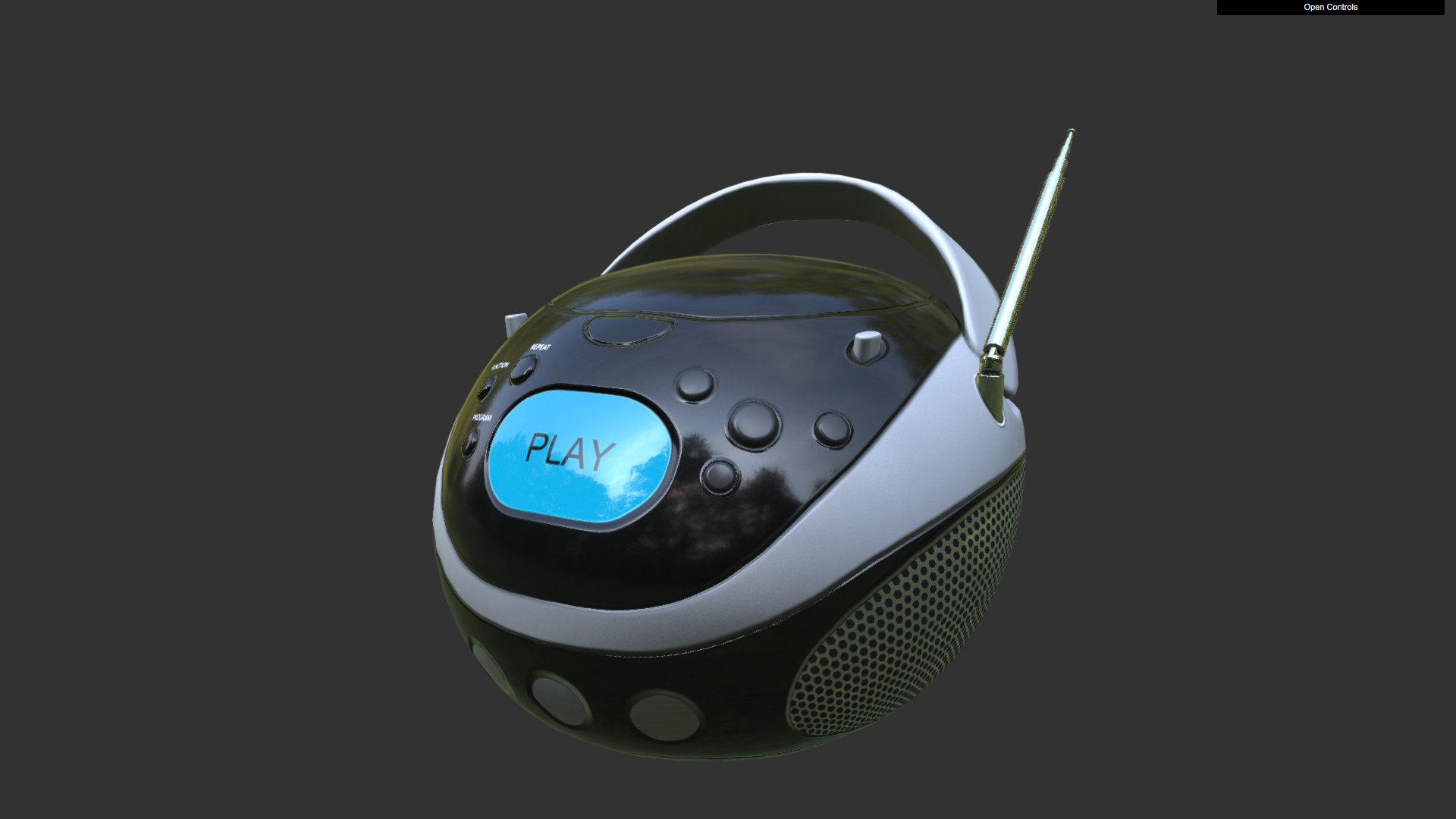This is the official Khronos glTF 2.0 sample viewer using WebGL: glTF 2.0 Sample Viewer
Table of Contents
Pre-Release
Developed by UX3D and based on the former glTF-WebGL-PBR project. Supported by the Khronos Group and Facebook for animations, skinning and morphing.
Link to the live glTF 2.0 Sample Viewer.
Controls
click + drag : Rotate model
scroll : Zoom camera
GUI : Use to change models and settings
Change glTF model
- Choose one of the glTF models in the selction list
or
- Drag and drop glTF files into viewer
For local usage and debugging, please follow these instructions:
(1) Checkout the master branch
(2) Install dependencies with npm install
(3) Pull the submodules for the required glTF sample models and environments git submodule update --init --recursive
(4a) Start a demo in the browser with npm run dev, and open http://localhost:8000.
(4b) Start a demo in Electron with npm run dev:electron.
When making changes, the project is automatically rebuilt and the dist/ folder
is updated. Files in the dist/ folder should not be included in pull
requests — they will be updated by project maintainers with each new release.
NOTE: The dimensions of the rendered image are limited by the (virtual) desktop size.
Requirements
Configure environment
npm install(also installs Electron)npm run build(“compile” the code)
Run
npm run start-offscreen -- -- -hfor a list of available options
Example
npm run start-offscreen -- -- assets/models/2.0/FlightHelmet/glTF/FlightHelmet.gltf
After execution, the screenshot is stored as output.png on the file system.
- Requirements
- Install the Debugger for Firefox extension for Visual Studio Code
- Open the project folder in Visual Studio Code and select
Debug->Add Configuration->Firefoxso the.vscode/launch.jsonfile is created. Debug->Start Debuggingshould now launch a Firefox window with the sample viewer and VS Code breakpoints should be hit.
With the change from glTF 1.0 to glTF 2.0, one of the largest changes included core support for materials that could be used for physically-based shading. Part of this process involved chosing technically accurate, yet user-friendly, parameters for which developers and artists could use intuitively. This resulted in the introduction of the Metallic-Roughness Material to glTF. If you would like to read more about glTF, you can find the content at its GitHub page.
A good reference about Physically-Based Materials and its workflow can be found on the THE PBR GUIDE - PART 1 and THE PBR GUIDE - PART 2 from allegorithmic.
For implementation details and further theory, please find more information in the Real Shading in Unreal Engine 4 presentation from the SIGGRAPH 2013 course.
For further reference, please read the glTF 2.0: Appendix B: BRDF Implementation
The following sections do summarize the important shader code.
vec3 specularContribution = D * Vis * F;
vec3 diffuseContribution = (1.0 - F) * diffuse;
Please note: Vis = G / (4 * NdotL * NdotV)
Trowbridge-Reitz GGX
float microfacetDistribution(MaterialInfo materialInfo, AngularInfo angularInfo)
{
float alphaRoughnessSq = materialInfo.alphaRoughness * materialInfo.alphaRoughness;
float f = (angularInfo.NdotH * alphaRoughnessSq - angularInfo.NdotH) * angularInfo.NdotH + 1.0;
return alphaRoughnessSq / (M_PI * f * f);
}
Fresnel Schlick
vec3 specularReflection(MaterialInfo materialInfo, AngularInfo angularInfo)
{
return materialInfo.reflectance0 + (materialInfo.reflectance90 - materialInfo.reflectance0) * pow(clamp(1.0 - angularInfo.VdotH, 0.0, 1.0), 5.0);
}
Please note, that the above shader code includes the optimization for "turning off" the Fresnel edge brightening (see "Real-Time Rendering" Fourth Edition on page 325).
Smith Joint GGX
float visibilityOcclusion(MaterialInfo materialInfo, AngularInfo angularInfo)
{
float NdotL = angularInfo.NdotL;
float NdotV = angularInfo.NdotV;
float alphaRoughnessSq = materialInfo.alphaRoughness * materialInfo.alphaRoughness;
float GGXV = NdotL * sqrt(NdotV * NdotV * (1.0 - alphaRoughnessSq) + alphaRoughnessSq);
float GGXL = NdotV * sqrt(NdotL * NdotL * (1.0 - alphaRoughnessSq) + alphaRoughnessSq);
return 0.5 / (GGXV + GGXL);
}
Lambert
vec3 diffuse(MaterialInfo materialInfo)
{
return materialInfo.diffuseColor / M_PI;
}
- glTF 2.0
- KHR_lights_punctual extension
- KHR_materials_pbrSpecularGlossiness
- KHR_materials_unlit extension
- KHR_texture_transform extension
